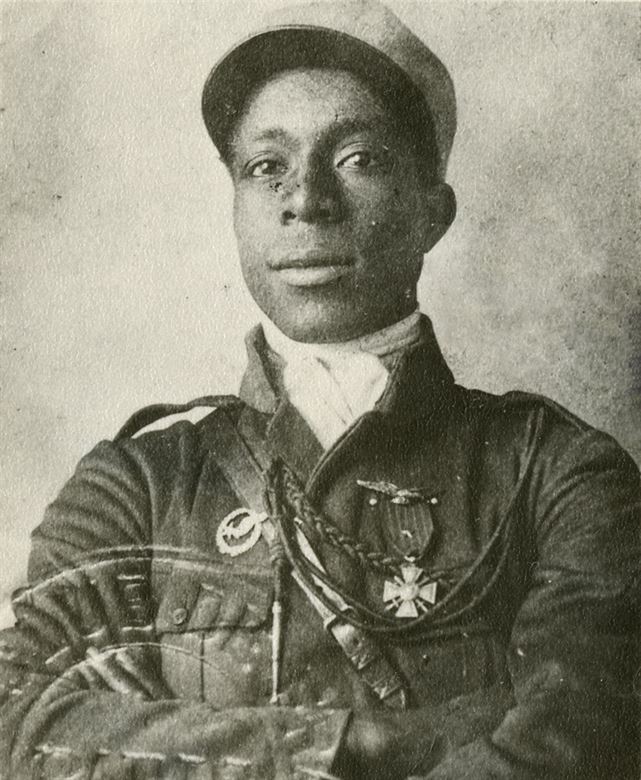Eugene Bullard’s incredible journey to becoming the first African American fighter pilot started in 1916, following a question from a colleague American soldier of the French Foreign Legion – Jeff Dickson.
Dickson, a white Mississippian, commiserating with Bullard, who was injured during battle asked: “Gene, suppose they find you’re too lame for the infantry?”
“I’ll go into the air force,” retorted injured Bullard.
Dazed by the answer, Dickson reminded Bullard there weren’t any “negroes in aviation.” “Sure do,” was Bullard’s response, adding: “That’s why I want to get into it. There must be a first to everything, and I’m going to be the first Negro military pilot.”
Exactly what he did and 103 years later a statue was unveiled in his honor in Warner Robins, Georgia, at the Museum of Aviation next to Robins Air Force Base, and about 100 miles south of Atlanta.

At the ceremony to honor the life and service of Bullard, Colonel Dawson Plummer, commander of the 194th Armored Brigade based at Fort Benning, Ga. and a graduate of the Tuskegee Institute exalted Bullard’s legacy and enduring impact.
“We all owe a great deal of gratitude to Lieutenant Bullard for being a true pioneer, not only in the aviation community but for how he persevered over discrimination and proved that anybody can do anything if they put their mind to it,” Plummer said.
France Consul General in Atlanta, Vincent Hommeril, said Bullard’s life and exploits “are symbolic of the strong ties that link France and the United States, nations that have long worked together to promote democracy and freedom.”
“May this statue honor his accomplishments and remain as a living symbol of French and American friendship for years to come.”

The story of Bullard
Bullard was born on October 9, 1894, and was the youngest son among 10 children. Three of the 10 died in childbirth.
His father Octave Bullard was a former slave and mother Creek Indian called Joyakee. She died when Bullard was six years old.
Growing up in Columbus, Ga. Bullard was a subject of unbridled Southern hatred, racism, and bigotry. Four years later, at age 10, Bullard left the United States in search of acceptance as he couldn’t deal any longer with the almost constant racial bigotry.

According to the historical account, inspired by his father’s tales of a faraway country where skin color doesn’t limit one’s potential, Bullard, in 1904 began the determined journey to France for a fresh start. It was said that he stowed away aboard a merchant freighter but was apprehended and dropped ashore in Aberdeen, Scotland and by 1913 Bullard arrived in France.
He enlisted to become an American Volunteer in the French army—French Foreign Legion when the first world war started in 1914. He rose to the rank of corporal and for his bravery in combat, received the Croix de Guerre and other decorations.
Recuperating from serious wounds suffered during the Battle of Verdun in 1916, Bullard accepted an offer to join the French air force as a gunner/observer. However, when he reported to gunnery school, he obtained permission to become a pilot.
Bullard after training joined the approximately 200 other Americans who flew in the Lafayette Flying Corps, and he flew combat missions from August 27 until November 11, 1917. He distinguished himself in aerial combat, as he had on the ground, and was officially credited with shooting down one German aircraft. Bullard remained in France after the war as an expat, rejoining the army when the Germans invaded France in May 1940. He was 46-year-old then.

Badly wounded by an exploding shell, Bullard escaped the Germans and made his way to the United States. Bullard stayed in New York after the war and lived in relative obscurity, but to the French, he remained a hero.
He was one of the veterans chosen in 1954 to light the “Everlasting Flame” at the French Tomb of the Unknown Soldier under the Arc de Triomphe, and in 1959, the French honored him with the Knight of the Legion of Honor.
On October 13, 1961, Bullard died and was buried with full military honors in his legionnaire’s uniform in the cemetery of the Federation of French War Veterans in Flushing, N.Y.
On September 14, 1994, the Secretary of the Air Force posthumously appointed him a second lieutenant in the United States Air Force.










